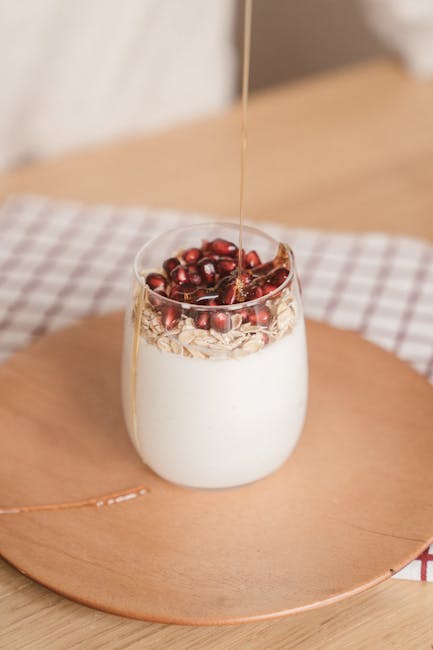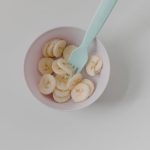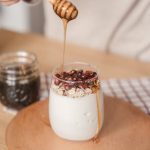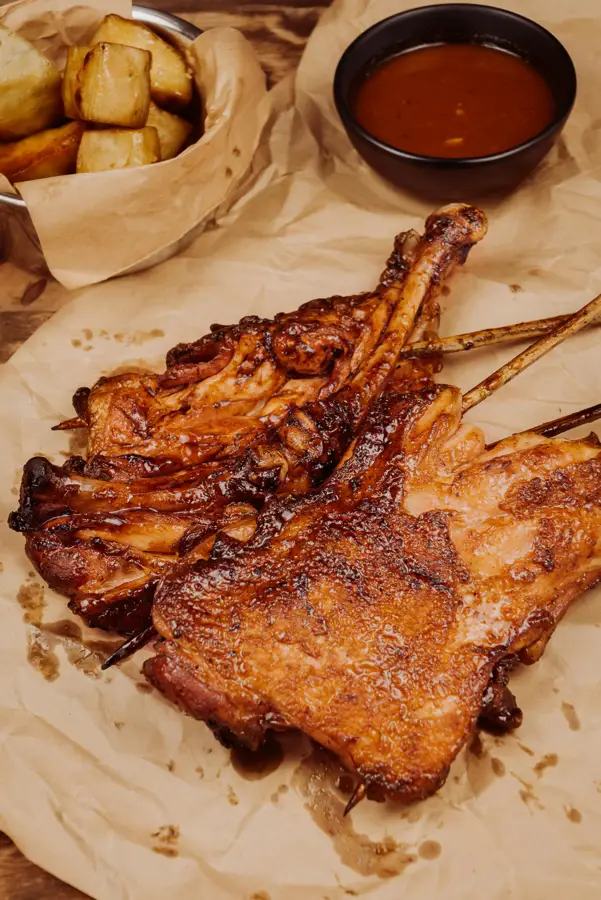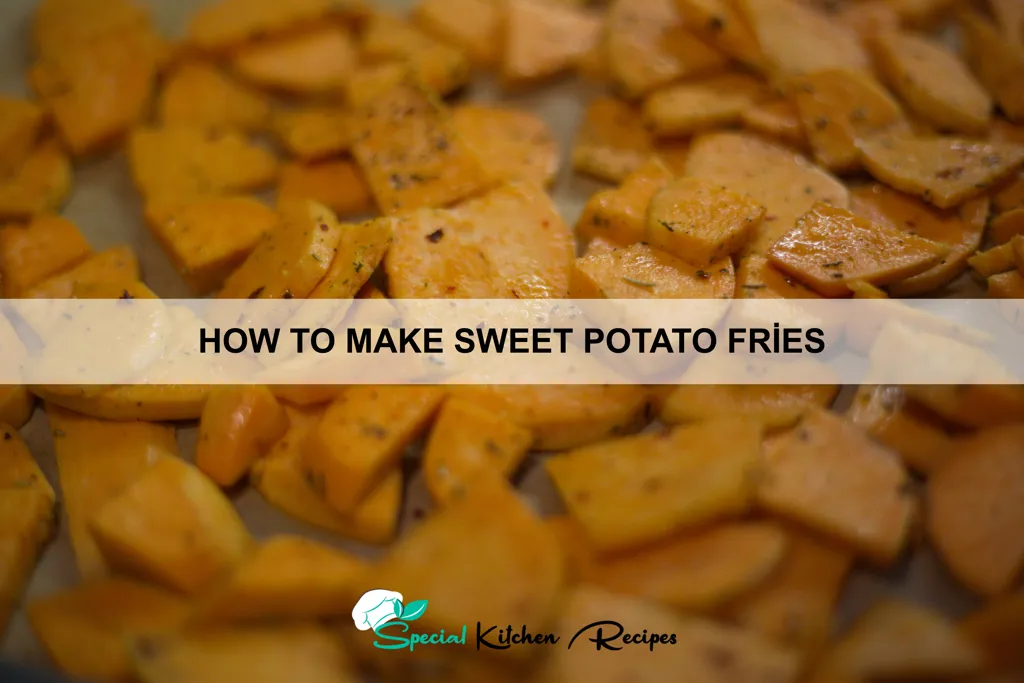Carrots, a humble root vegetable, have a surprisingly rich and varied history, spanning millennia and continents. Cultivated for over 5,000 years, originating in the region of modern-day Afghanistan, carrots weren’t always the vibrant orange we know today. Early varieties were purple, white, yellow, and even red, with the orange carrot emerging in the Netherlands during the 17th century, a result of selective breeding to honor the House of Orange. This deliberate cultivation led to the widespread adoption of the orange carrot, eventually becoming the dominant type globally.
The sweetness of carrots, particularly when enhanced with a glaze, lends itself beautifully to various culinary traditions. Honey, another ancient sweetener with a history nearly as long as the carrot itself, adds a complex layer of flavor and texture. Honey’s use in cooking dates back to ancient Egypt, where it was not only a sweetener but also a valued medicinal ingredient. Different cultures have utilized honey in unique ways, from the mead-making traditions of Northern Europe to the incorporation of honey in numerous sweet and savory dishes across Asia and the Middle East. The combination of carrots and honey, therefore, represents a confluence of ancient culinary practices, bridging geographical and historical divides.
The appeal of honey-glazed carrots extends beyond their delightful taste. Carrots are a nutritional powerhouse, packed with beta-carotene, which the body converts to vitamin A, crucial for vision, immune function, and cell growth. According to the USDA, one cup of cooked carrots provides nearly 200% of the recommended daily intake of vitamin A. The addition of honey provides a natural source of energy and antioxidants. This delicious dish, therefore, offers a delectable and healthful option, appealing to both the palate and the pursuit of a balanced diet. Globally, carrots rank among the top ten most produced vegetables, highlighting their enduring popularity and significance in global food systems. The specific appeal of honey-glazed carrots lies in its simplicity – a perfect balance of sweetness and savory earthiness, making it a versatile side dish suitable for countless occasions.
This recipe for Delicious Honey Glazed Carrots aims to celebrate this fascinating history and culinary fusion. We’ll explore the nuances of flavor achieved through a careful balance of honey’s sweetness, the earthiness of carrots, and the subtle notes of spices that can enhance the overall experience. Prepare to embark on a culinary journey that blends ancient traditions with modern culinary techniques, resulting in a dish that is both delicious and deeply satisfying.
Ingredients and Measurements
This recipe for Delicious Honey Glazed Carrots yields approximately 4 servings as a side dish. The ingredient quantities can be easily scaled up or down to suit your needs. Remember to always use fresh, high-quality ingredients for the best flavor and texture.
Carrots: We’ll be using 1 pound (approximately 450g) of carrots. You can use baby carrots, which require less preparation, or larger carrots, which will need to be peeled and chopped. For a visually appealing dish and even cooking, aim for uniformly sized carrot pieces. If using larger carrots, I recommend cutting them into 1/2-inch thick slices or 2-inch long sticks. Avoid using excessively large pieces, as they may not glaze evenly.
Butter: 4 tablespoons (57g) of unsalted butter are needed. Unsalted butter allows you to control the saltiness of the dish. Using salted butter will require adjusting the salt in the recipe accordingly. Ensure the butter is softened to room temperature for easier blending with the other ingredients. This will create a smoother, more emulsified glaze.
Honey: We’ll be using 1/4 cup (50g) of honey. The type of honey you use will impact the flavor profile of your glazed carrots. Consider using a high-quality honey with a distinct flavor, such as wildflower or clover honey. Avoid using honey that is overly crystallized, as it might not blend smoothly into the glaze.
Soy Sauce: 1 tablespoon (15ml) of low-sodium soy sauce adds a savory depth to the sweetness of the honey. Low-sodium soy sauce is recommended to prevent the dish from becoming overly salty. If using regular soy sauce, reduce the amount slightly to taste.
Apple Cider Vinegar: 1 teaspoon (5ml) of apple cider vinegar provides a subtle tanginess that balances the sweetness and saltiness. This brightens the overall flavor of the glaze. You can substitute with white wine vinegar or rice vinegar if needed, but the flavor profile will be slightly altered.
Garlic: 1 clove of garlic, minced or finely grated, adds a delicious savory aroma and flavor to the glaze. Fresh garlic is preferred for the best flavor. If using pre-minced garlic from a jar, use slightly less to account for the higher concentration of flavor.
Fresh Thyme: 1 teaspoon of fresh thyme leaves (or 1/2 teaspoon dried thyme) adds a wonderful herbaceous note. Fresh thyme is highly recommended for its superior flavor and aroma. If using dried thyme, remember that it’s more concentrated, so use less.
Salt and Black Pepper: A pinch of salt and freshly ground black pepper to taste. This is crucial for enhancing the flavors of the carrots and the glaze. Start with a small amount and adjust to your preference. Remember that the soy sauce already contains some salt, so take this into account.
Optional Garnish: Toasted sesame seeds or chopped fresh parsley can be added as a garnish for extra visual appeal and flavor. This is entirely optional, but it elevates the presentation of the dish.
Equipment List
Preparing delicious honey-glazed carrots requires the right tools to ensure even cooking and a beautiful final product. This equipment list details the necessary items, along with recommendations for optimal results. While substitutions are sometimes possible, using the suggested equipment will yield the best texture and flavor.
1. Large Saucepan (3-quart capacity minimum): A heavy-bottomed saucepan is crucial for even heat distribution. This prevents hot spots that can burn the carrots or cause uneven glazing. A 3-quart saucepan is ideal for a standard recipe serving 4-6 people. Larger quantities will require a larger saucepan accordingly. Avoid using non-stick pans for this recipe as the sugars in the glaze can damage the non-stick coating over time.
2. Cutting Board (Large): A large cutting board provides ample space for preparing the carrots. Choose a cutting board made of durable material like wood or high-quality plastic, easy to clean and resistant to knife marks. A damp cloth placed under the cutting board will also help prevent it from slipping.
3. Chef’s Knife (8-inch): A sharp chef’s knife is essential for efficiently and safely chopping the carrots into uniform pieces. Consistent sizing ensures even cooking. A dull knife will result in uneven cuts and potentially bruised carrots. Regular sharpening of your chef’s knife is highly recommended.
4. Measuring Cups and Spoons (Dry and Liquid): Accurate measurements are key to achieving the perfect honey glaze balance. Use both dry and liquid measuring cups and spoons to accurately measure the ingredients. Nested measuring cups and spoons are convenient for storage, but ensure you are using the correct size for each ingredient.
5. Whisk (Balloon Whisk preferred): A whisk, preferably a balloon whisk, is ideal for smoothly incorporating the glaze ingredients and preventing lumps. A fork can be used in a pinch, but a whisk creates a smoother, more consistent glaze. A balloon whisk’s larger surface area incorporates air better, leading to a lighter glaze.
6. Tongs or Spatula: Using tongs or a spatula will help you gently toss the carrots in the glaze, ensuring they are evenly coated. Avoid using metal utensils that could scratch your saucepan if it’s non-stick, however this is less of a concern with a heavy-bottomed stainless steel pan.
7. Serving Bowl: Once the carrots are glazed and cooked, transfer them to a serving bowl to allow them to cool slightly before serving. Choose a bowl that complements your serving style and presentation. A small, shallow bowl might be preferable for a more intimate setting, while a larger bowl is suitable for a buffet.
8. Optional: Fine-Mesh Sieve or Strainer: If your honey contains impurities or you want an exceptionally smooth glaze, consider straining the glaze through a fine-mesh sieve or strainer before adding the carrots. This will remove any solids and result in a clearer, more refined glaze.
9. Oven (Optional): While stovetop cooking is the primary method, you can finish the carrots in the oven for a deeper caramelization. If using an oven, a baking sheet or oven-safe dish will be necessary.
Preparation Phase: Washing and Peeling
Before embarking on the delightful journey of creating delicious honey-glazed carrots, meticulous preparation is key to achieving optimal flavor and texture. This crucial first step involves thoroughly washing and efficiently peeling your carrots. We’ll be working with approximately 1 pound (450g) of carrots for this recipe, but you can easily adjust the quantities to suit your needs.
Begin by selecting your carrots. Choose carrots that are firm, vibrant in color, and free from blemishes or soft spots. Avoid carrots that appear withered or have significant damage, as these may affect the final taste and texture of your dish. A good selection ensures a superior culinary experience.
Next, the washing process is paramount. Thoroughly rinse the carrots under cool, running water. This removes any loose dirt, soil, or pesticide residue that might be present. Scrub the carrots gently with your hands or a vegetable brush, paying particular attention to the root and stem ends which may harbor more dirt. A thorough washing is crucial for food safety and ensures a cleaner, more appealing final product.
Now, let’s move on to peeling. You have several options for peeling your carrots. The most common method is using a vegetable peeler. Hold the carrot firmly and use a sharp peeler to glide it along the length of the carrot, removing the outer skin in long, thin strips. Ensure you use a sharp peeler for efficient and even peeling to prevent waste. A dull peeler will require more force, potentially leading to uneven peeling and a loss of valuable carrot flesh.
Alternatively, you can use a paring knife for peeling. This method provides more control, but it requires a steady hand and some practice to avoid cutting into the carrot itself. Gently hold the carrot and use the knife to carefully peel away the outer layer. This method is ideal for removing blemishes or damaged sections.
For those seeking a quicker method, you can consider using a food processor with a peeling attachment. However, this method can be wasteful and may not be suitable for all carrots, particularly those with irregular shapes. Always follow the manufacturer’s instructions carefully when using a food processor.
Once peeled, inspect the carrots again. Remove any remaining blemishes or imperfections. Remember, proper preparation is half the battle in creating a truly delicious dish. With your carrots washed and peeled, you’re now ready to proceed to the next stage of creating your delightful honey-glazed carrots.
Cooking Techniques: Glazing and Roasting/Boiling
This section details the two primary cooking methods for preparing delicious honey-glazed carrots: glazing (which involves roasting) and boiling. Both yield tasty results, but offer distinct textural and flavor profiles. Choosing the right method depends on your preference and the time you have available.
Roasting (Glazing Method)
Roasting carrots allows for a beautiful caramelization of the sugars, both natural to the carrot and added via the honey glaze, resulting in a deeply flavorful and slightly tender-crisp texture. This method is ideal for achieving that signature glazed finish.
Ingredients for Roasting:
- 1 lb carrots, peeled and chopped into 1-inch pieces (approximately 4-5 medium carrots)
- 2 tablespoons olive oil
- 1/4 cup honey (adjust to your sweetness preference)
- 1 tablespoon balsamic vinegar (optional, adds depth of flavor)
- 1/2 teaspoon salt
- 1/4 teaspoon black pepper
- Optional: 1 teaspoon ground cinnamon or other spices
Instructions:
- Preheat your oven to 400°F (200°C).
- In a large bowl, toss the carrots with olive oil, honey, balsamic vinegar (if using), salt, pepper, and any optional spices. Ensure the carrots are evenly coated.
- Spread the carrots in a single layer on a baking sheet. Avoid overcrowding; this ensures even roasting and caramelization.
- Roast for 20-25 minutes, or until the carrots are tender and slightly caramelized. Flip the carrots halfway through for even browning.
- Remove from oven and serve immediately. The glaze will thicken slightly as it cools.
Boiling Method
Boiling, while a quicker method, produces a softer, more tender carrot. While it lacks the caramelized exterior of roasted carrots, it still allows for a delicious honey glaze to coat the vegetables. This method is best if you need a quick side dish.
Ingredients for Boiling:
- 1 lb carrots, peeled and chopped into 1-inch pieces
- 2 cups water
- 1/4 cup honey
- Pinch of salt
Instructions:
- Bring the water to a boil in a medium saucepan.
- Add the carrots and salt, and return to a boil. Reduce heat to a simmer.
- Simmer for 10-15 minutes, or until the carrots are tender. Check for doneness by piercing a carrot with a fork.
- Drain the carrots, reserving about 2 tablespoons of the cooking liquid.
- Return the carrots to the saucepan. Stir in the honey and reserved cooking liquid. Cook for another 2-3 minutes, allowing the honey to coat the carrots and slightly thicken.
- Serve immediately.
Professional Recommendation: Regardless of the method chosen, taste and adjust the seasoning as needed. You may want to add more honey for extra sweetness or a pinch more salt for balance. Experiment with different spices to create your unique flavor profile.
Serving Suggestions
These delicious honey glazed carrots are incredibly versatile and can be served in a variety of ways, complementing both simple and elaborate meals. Their sweetness and subtle savory notes make them a perfect addition to any table.
As a Side Dish: The most classic way to enjoy these carrots is as a vibrant and flavorful side dish. A serving size of approximately 1/2 cup (about 75g) per person is ideal. They pair beautifully with roasted meats like chicken, pork, or lamb. The honey glaze complements the richness of the meat while providing a delightful textural contrast. Consider serving alongside other roasted vegetables like Brussels sprouts or sweet potatoes for a complete and balanced meal.
With Grain Bowls: Elevate your grain bowls with the addition of these honey glazed carrots. A 1/3 cup (approximately 50g) serving adds a touch of sweetness and color to your quinoa, brown rice, or farro bowls. Combine them with grilled chicken or tofu, chickpeas, and a variety of fresh herbs for a nutritious and satisfying meal. Consider adding a sprinkle of toasted sesame seeds or chopped cilantro for extra flavor and texture.
In Salads: While the carrots are delicious warm, they also make a fantastic addition to salads, especially those with a slightly savory or tangy dressing. Add 1/4 cup (approximately 35g) of cooled honey glazed carrots to your favorite salad for a burst of sweetness and a pleasant textural element. They pair particularly well with salads featuring goat cheese, walnuts, and apples. Remember to allow the carrots to cool completely before adding them to the salad to prevent the dressing from becoming diluted.
As a Topping: Use these honey glazed carrots as a topping for savory dishes. A spoonful or two (approximately 20-30g) scattered over grilled fish, chicken, or even a hearty soup can add a layer of sweetness and visual appeal. The glaze adds a beautiful shine and a glossy finish to the dish.
For Brunch or Breakfast: Don’t limit these carrots to dinner! A small portion (approximately 1/4 cup, 35g) incorporated into a breakfast scramble or frittata adds a touch of unexpected sweetness and vibrant color. The honey glaze complements the savory eggs and other breakfast ingredients beautifully.
Presentation Tips: For an elegant presentation, arrange the honey glazed carrots artfully on the plate. Consider using a small spoon to create a neat pile or arranging them in a single layer alongside the main course. Garnishing with fresh herbs, such as parsley or thyme, can further enhance the visual appeal. Remember that food presentation is a crucial part of the overall dining experience.
No matter how you choose to serve them, these honey glazed carrots are sure to be a hit. Their versatility allows them to be incorporated into a wide range of dishes, adding a touch of sweetness and visual appeal to any meal.
Tips and Tricks for Perfect Glaze
Achieving that glossy, intensely flavorful honey glaze on your carrots takes a bit of finesse. Follow these tips and tricks to ensure your carrots are not only tender-crisp but also boast a stunning, delicious glaze.
Start with the right honey: Not all honeys are created equal. For the best glaze, opt for a honey with a strong, distinct flavor. Darker honeys, like buckwheat or sorghum honey, will impart a richer, more complex taste. Using about ⅓ cup of honey for a pound of carrots is a good starting point, but feel free to adjust to your preference. You can also experiment with a blend of honeys for a unique flavor profile.
Balance the sweetness: While honey provides sweetness, a perfectly balanced glaze requires a touch of acidity and savoriness. A tablespoon of apple cider vinegar or lemon juice will brighten the sweetness and prevent the glaze from becoming cloying. A pinch of salt enhances the overall flavor and balances the sweetness. Don’t underestimate the power of a small amount of ground ginger or cinnamon to add warmth and complexity to your glaze.
Control the consistency: The ideal glaze is thick and glossy, clinging beautifully to the carrots. To achieve this, simmer the glaze gently after adding all the ingredients. Reduce the glaze over medium-low heat for about 5-7 minutes, or until it thickens to your desired consistency. Stir frequently to prevent burning. If it becomes too thick, add a teaspoon of water at a time until you reach the desired consistency. If it’s too thin, continue simmering for a few more minutes.
Glazing technique matters: Don’t just pour the glaze over the cooked carrots. For even coating and maximum flavor adhesion, toss the carrots in the glaze while it’s still hot. Use tongs to gently coat each carrot. Reserve a small amount of glaze for drizzling over the carrots just before serving for extra shine and visual appeal.
Don’t overcrowd the pan: When you’re cooking the carrots, ensure you don’t overcrowd the pan. Overcrowding will result in steaming instead of roasting, leading to soggy carrots and a less intense glaze. Work in batches if necessary to ensure even browning and glazing.
Get creative with additions: While a simple honey glaze is delicious, feel free to experiment with additions. A tablespoon of Dijon mustard can add a surprising tang, while a teaspoon of soy sauce will provide umami depth. Finely chopped fresh herbs like thyme or rosemary can also elevate the flavor profile. Consider adding a touch of orange zest for a citrusy twist.
Temperature is key: Ensure your carrots are cooked through but still retain a slight bite before adding the glaze. This prevents the glaze from becoming watery. Adding the glaze towards the end of cooking allows it to caramelize and develop its rich flavor and beautiful gloss.
Presentation counts: Once glazed, arrange the carrots attractively on a serving platter. The glossy glaze will make them visually appealing. Consider garnishing with toasted sesame seeds, chopped nuts, or a sprinkle of fresh herbs for an added touch of elegance.
Delicious Honey Glazed Carrots: Recommendations
These delectable honey glazed carrots are a perfect side dish for any occasion, from casual weeknight dinners to elegant holiday feasts. Their sweet and savory flavor profile complements a wide variety of main courses, adding a touch of vibrant color and delightful texture to your meal.
Serving Suggestions: These honey glazed carrots are incredibly versatile. They shine as a side dish alongside roasted meats like chicken, pork, or lamb. Their sweetness pairs beautifully with the richness of these proteins. They also make an excellent accompaniment to grilled fish or seafood, providing a contrasting sweetness against the savory flavors. For a vegetarian option, serve them alongside hearty lentil stews or roasted vegetables for a complete and balanced meal. Consider adding a sprinkle of toasted sesame seeds or chopped fresh parsley just before serving for an extra touch of visual appeal and flavor.
Storage Conditions: For optimal freshness and flavor, store leftover honey glazed carrots in an airtight container in the refrigerator. They will keep well for up to 3-4 days. To reheat, gently warm them in a saucepan over low heat or in the microwave until heated through. Avoid overcooking, as this can lead to a loss of moisture and tenderness.
Complementary Dishes: The versatility of honey glazed carrots allows for a wide range of culinary pairings. They are a delicious addition to a Thanksgiving or Christmas spread, harmonizing beautifully with traditional dishes like turkey, stuffing, and mashed potatoes. For a more casual setting, they work wonderfully with grilled burgers or sausages. Their sweetness also makes them a fantastic addition to grain bowls, adding a textural and flavorful element to a healthy and satisfying meal. Consider adding them to salads for a unique and unexpected twist.
Nutritional Information (per serving, approximate): The nutritional content of honey glazed carrots will vary slightly depending on the specific recipe and ingredients used. However, a typical serving (approximately ½ cup) will contain roughly 50-70 calories. They are a good source of vitamin A, fiber, and potassium. The exact macronutrient breakdown will vary, but generally, a serving will provide a small amount of protein and fat, with the majority of calories coming from carbohydrates.
Important Note: While delicious and nutritious, it’s important to be mindful of the sugar content in honey. Adjust the amount of honey used in your recipe according to your dietary needs and preferences. Individuals with diabetes or other health conditions should consult with their doctor or a registered dietitian before incorporating this dish into their diet regularly.
Calorie and Nutritional Information Disclaimer: The provided nutritional information is an estimate and may vary based on specific ingredients and portion sizes used. For precise nutritional information, it is recommended to use a nutrition calculator with the exact ingredients and quantities included in your recipe.

